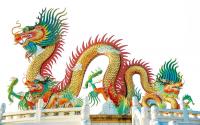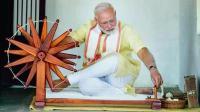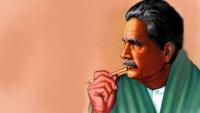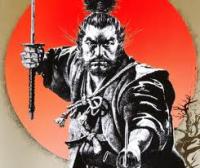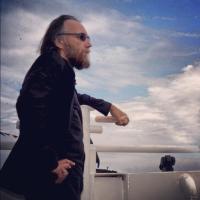Asia
A LIBERAL NIGHTMARE: THE RISE OF THE FOURTH POLITICAL THEORY Primary tabs
As a matter of fact, Dugin’s Fourth Political Theory as a new political alternative opposes the geopolitical and ideological victory of liberalism over communism and fascism. For Dugin, liberalism as a foundational basis of Capitalism reached its peak during the cold war and hence, began disintegrating in the post-cold war era, when it became unchallenged. In this way, the unchallenged post-liberalism came into close association with postmodernity. Unfortunately, today it is the postmodernity that defines post-liberalism—, which illustrates the complete relegation and refutation of liberal history.
Principles for Comprehending Chinese Civilization
China is recognized to be an independent and unique civilization by virtually everyone, and therefore there is no need to prove this. Rather, we are faced with attempting to reveal the structure of this civilization’s Logos and to determine as much as is possible its geosophical map both within the borders of China and beyond, as well as in its dialogue with neighboring civilizations.
Chinese culture has exercised an enormous and at times decisive influence on neighboring peoples, first and foremost on Korea, Vietnam, and Japan, all of which during certain eras held themselves to be part of Great China – not in the sense of political unity, but as indelible and organic parts of Chinese civilization and the Chinese horizon. This horizon also substantially impacted the peoples of Tibet as well as the nomads of Turan bordering China from the North. Moreover, we can encounter definite influences of the Chinese element among the peoples of Indochina and South-East Asia, such as in Cambodia, Laos, Myanmar, Thailand, Malaysia, as well as, although to a lesser extent, Indonesia and the Philippines.
The Noology of the Ancient Chinese Tradition
The circle of sacred animals is apportioned according to the logic of the five elements: the Black Turtle or Snake is associated with Water and the Underworld (the land of the Yellow Springs); the Yellow Dragon with Wood, the East, and the Spring Equinox; the Red Phoenix with the South and the Summer Solstice; the White Tiger with Metal, the West, and the Autumnal Equinox; and the Yellow Unicorn (qilin) with Earth and the Center. All of these sacred beings, however, are described as having a whole complex set of properties, such as horns, the tails of snakes or fish, wings, paws, scales, etc. In other words, all of them are pantheria, or “all-beasts” featuring elements of other animals. They are proto-animals, spirits, and sacred symbols containing the powers of the fivefold rhythm of the dispensation of Yin-Yang. In some sense, they might be called “gods” or “onto-logoi” insofar as they exhibit the most general synthetic powers conjugated with each of the elements; but as living and personified beings, they embody these powers in a concentrated form drawn towards a single pole. Appealing to the pantheria is a kind of spell of the elements which, in order for it to be possible to be evoked, must have personal traits.
Putin sees India and China as Moscow’s partner in multipolar world
“Huntington could foresee that instead of ideology, modernisation, westernisation, technological assertion, there is some core of self-consciousness or identity that is more stable and stronger. I think he could see that we are coming to this moment, this deep truth of fundamental spiritual identity of civilizations, as they appear on the historical scene after the collapse of liberalism—the last utopic modern political theory.”
“Liberalism is obsolete as Putin has said recently, and instead of it, civilizations reappear, and now the problem is what will be the multipolar order? What are the borders, and that is very important and significant. What are the numbers of civilizations that are ready or not yet? What will be the juridical aspect of civilizational? All that has to be decided now. We live in the moment that nothing is as yet decided, but everything is put under question,” Mr. Dugin observed
MUHAMMAD IQBAL, EURASIANITY, AND THE FOURTH WAY
It is significant that the Eurasianists rejected all three of these projects (and political theories), and even exposed their disastrous nature. The Eurasianists also predicted the collapse of the Soviet Union from the very onset of its establishment. The Eurasianists discussed the importance of religion to the life of the people and the state, and the Eurasianists insisted on the peaceful coexistence of cultures and ethnoi. Although the Eurasianist movement proper existed only during the interwar period, it found successors in the Soviet Union and now in contemporary Russia. Of extreme interest in this regard are the ideas of the philosopher Alexander Dugin, who has proposed the model of a Fourth Political Theory. This variation of “society D” continues the line of classical Eurasianity and rejects the three historical political theories of Liberalism, Fascism, and Communism. If Muhammad Iqbal spoke of the need to obtain the collective self (Ijtimayi Khudi) for a new society, then Professor Dugin is employing the terminology of the German philosopher Martin Heidegger in speaking about the Selbst and Dasein.
Round Table: Ossendowski, Guenon, Maritain
The arrival in Paris of Mr. Ferdinand Ossendowski, who has been called the Robinson Crusoe of the twentieth century, could not go unnoticed; all critics are unanimous in considering Beasts, Men and Gods, his first book translated into French, as a prodigious book, the most exciting travelogue they ever read,. We had the good fortune to talk with Ossendowski, the man who saw the living Buddha, and we had the no less valued opportunity to meet with the three French personalities who seem best designated to compare their doctrines and science to his experiences, and to judge, in the light of Western concepts, the incredible number of observations he reported about his dramatic trip through Asia. I selected the historian of Asia, Rene Grousset, whom we presented to our readers a few weeks ago, Jacques Maritain, the Catholic philosopher, to whom the Thomistic revival in this country is largely due, and Rene Guenon, the Hinduist, whose meditations have earned us this remarkable book,Introduction to Hindu Doctrines, a nice summary, full of substance, both East and West, and who publishes these days on the questions which trouble the European consciousness.
New paradigm of science (Tokyo University)
The rational man, the man who bases his perception of the world on the "common sense" ("la bonne raison", "bon sens" or "la bonne foi") is the subject of the modern science , its self, its creator, its main developer. In the pre-scientifical period such a subject did not exist purely or, at least, it did not claim for the rational approach as the only one to formulate the truths of the surrounding reality's nature. Some certain superrational dogmas and myths always prevailed over the rational man. As to science, it set itself to emancipation from non-rational foundations from the very beginning. And this is just what one of its specific distinctive features consists in. Where this criterion is not observed, we cannot talk about the science in the strict (modern) sense of that word and should use other formulas, such as "pre-scientific conceptions", "para-scientific method", "pre-scientific" and in some situations even "post-scientific" approaches.
IRAN, ARYAN KINGDOM AND UNIVERSAL EMPIRE
The idea of Iran, as a federating civilization, both absorbing and prevailing over the ancient kingdoms of West and South Asia arises with the conquests and universal claims of Cyrus (Kurosh) the Great, the founder of the Achaemenid Empire in 549 B.C. but the great Median Kings, before him, had already laboured to unite the tribes of the Iranian plateau while throwing covetous glances at Assyria and Babylonia. Indeed the Mitannians, the Hittites and the Kassites, to mention three illustrious predecessors, had built mighty “Indo-Iranian” states (for want of a better cultural definition) in the Near East, several centuries before Cyrus. Indeed the Kassites ruled Babylonia during the second half of the second millennium BC.
Further back in history, it is now possible to trace the roots of Iranian civilization at least to the fourth millennium BC, and not, as was held so far in Mesopotamia, the supposed cradle of humanity hailed in the Bible, but much farther to the East, in what is today Kerman province, on the site of Jiroft which was only discovered in 2001, not far from the shores of the Persian Gulf, on the Halil river.
Russia, Japan, China, and the Resistance to Modernity:Eurasianism and Pan-Asianism Revisited
In the 1920s, Russian Eurasianists as well as some Japanese philosophers try to organize a cultural stronghold able to serve as an orientation mark to “second rate” nations. The result is an autonomous intellectual tradition that leaves behind the dichotomy of particularism and universalism. Also in China, the interest in Asian cultural geography led Chinese intellectuals to an awareness of global space that they had to put in relation with the historical space of China. However, criticism of modernization in Japan and Russia, instead of questioning the idea of modernization as such, tends to deal with the quality of modernization. The article examines the consequences that these movements might have for the contemporary situation.
In the 1920s, Russian Eurasianists as well as some Japanese philosophers try to organize a cultural stronghold able to serve as an orientation mark to “second rate” nations. The result is an autonomous intellectual tradition that leaves behind the dichotomy of particularism and universalism. Also in China, the interest in Asian cultural geography led Chinese intellectuals to an awareness of global space that they had to put in relation with the historical space of China. However, criticism of modernization in Japan and Russia, instead of questioning the idea of modernization as such, tends to deal with the quality of modernization. The article examines the consequences that these movements might have for the contemporary situation.
IN THE COUNTRY OF RISING "DO"
Professor Tamotsu Murata told that story in the ancient little restaurant in Asakusa residential area, explaining the canvas which hanged there on a wall. The slender old profesor from a Samurai family was writing haiku poetry on a paper sheet, which opposite side was dotted with mathematic formulas. He was finishing a book on the problem of continuality.
"I think we should seek for the source of continuum in the mistery of a moment", he had told not long before. "One day many years ago, when I was totally young, not such as I am now (the impenetrable visage, in which the smile is expressed by the unnoticeable movement of the hair), I was standing in a tiny yard, looking at the sky, and suddenly I understood, that I am. That there is I and only I. And I not as something occured, lasting, but as something momentary. Continuity is born from a revelation moment."
Hyperborea and Eurasia
The ancient civilizations feared and did not understand the tribesman of Turan. They built the Great Wall and waged punitive campaigns to protect themselves, and despised and hated him, but with surprising frequency he reminded them of their own ideals. Fierce, indomitable Turan: ruthless, high-cheeked, blue-eyed, blond and high-spirited.
Turan – Hyperborean in the broadest sense – was the source of the blood royal. Most of the imperial and royal lines in history came into the civilized zone from the North. Chinese dynasties were for the most part Turanian in origin: Hun, Toba, Khitan, Jurchen, Mongol, and finally Manchu. Alexander the Great himself was the son of a king of the northern barbarians—Philip of Macedon.



